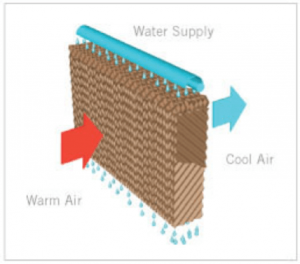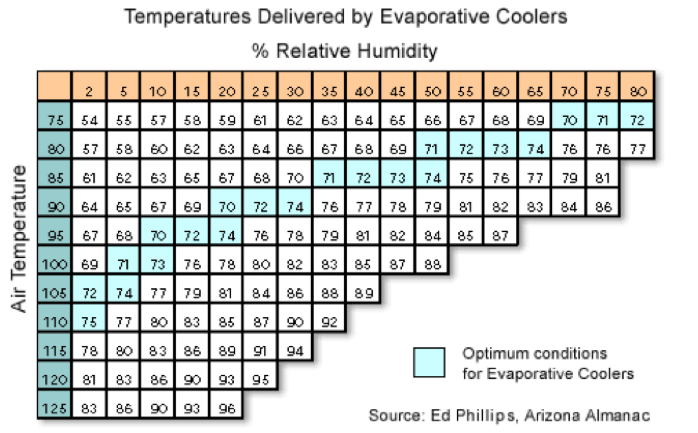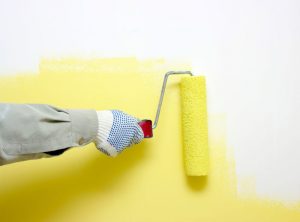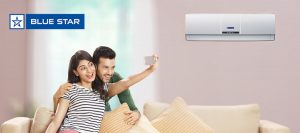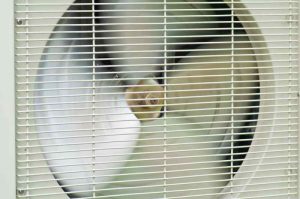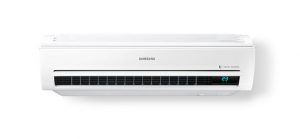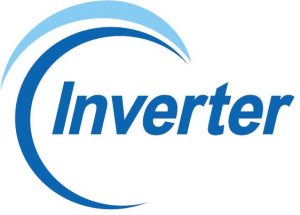Best Air Coolers in India in 2024 Buyer's Guide
- Best Brand of Air Coolers in India in 2024
- Best Air Coolers in India in 2024
- Working of air coolers
- Things to be considered while buying a cooler
- Effectiveness of Coolers in various temperatures
- Power consumption, efficiency and other factors
- Main advantages of Air Coolers
- Main disadvantages of Air Coolers
- Tips for better working of Air Coolers
If you are trying to beat the summer heat, but at the same time want an affordable and effective way to do it, then air coolers will be the best option for you. Today many different types of air coolers from various brands are available. There are different types of coolers available in the market such as room coolers (used for bedrooms, small offices), duct coolers (used for central air cooling), jumbo coolers (used for large halls, bigger offices) etc. based on the area they cool. But the basic principle of working remains the same for all of them.
- Best Brand of Air Coolers in India in 2024
- Best Air Coolers in India in 2024
- Working of air coolers
- Things to be considered while buying a cooler
- Effectiveness of Coolers in various temperatures
- Power consumption, efficiency and other factors
- Main advantages of Air Coolers
- Main disadvantages of Air Coolers
- Tips for better working of Air Coolers
In this post we will try to explain the working of air coolers and provide you some tips to buy a new air cooler. But before that, we will provide you the information that you came here to look for: The Best Air Cooler Brands and Best Air Coolers in India in 2024. For the working of air coolers and Buying Guide, click: here.
Best Brand of Air Coolers in India in 2024
- Symphony
- Bajaj
- Orient
- Crompton
- Kenstar
These are some of the most popular brands of indoor air coolers in India. These are the one available online on ecommerce stores. Out of these Symphony leads in popularity. But if you are someone who is looking to cool the whole room without using an Air Conditioner, then the best alternative for you is to go for Desert Coolers that are installed on a Window. The ones with metallic body is the best. Brands like Ram Coolers make such coolers. But they are not available online on ecommerce stores. Indoor air coolers add to humidity of the room.
Best Air Coolers in India in 2024
Here are a few good air coolers on Amazon in India in 2024:
 Bajaj PX 97 Torque New 36L Personal Air Cooler with Honeycomb Pads, Turbo Fan Technology, Powerful Air Throw and 3-Speed Control, White
Bajaj PX 97 Torque New 36L Personal Air Cooler with Honeycomb Pads, Turbo Fan Technology, Powerful Air Throw and 3-Speed Control, White
 Crompton Ozone Desert Air Cooler- 75L; with Everlast Pump, Auto Fill, 4-Way Air Deflection and High Density Honeycomb pads; White & Teal
Crompton Ozone Desert Air Cooler- 75L; with Everlast Pump, Auto Fill, 4-Way Air Deflection and High Density Honeycomb pads; White & Teal
 Symphony Diet 12T Personal Tower Air Cooler for Home with Honeycomb Pad, Powerful Blower, i-Pure Technology and Low Power Consumption (12L, White)
Symphony Diet 12T Personal Tower Air Cooler for Home with Honeycomb Pad, Powerful Blower, i-Pure Technology and Low Power Consumption (12L, White)
 Symphony Hicool i Personal Air Cooler for Home with Remote with Honeycomb Pad, Powerful Blower, i-Pure Technology and Low Power Consumption (31L, White)
Symphony Hicool i Personal Air Cooler for Home with Remote with Honeycomb Pad, Powerful Blower, i-Pure Technology and Low Power Consumption (31L, White)
 Crompton Optimus 65-Litre Inverter Compatible and Portable Desert Air Cooler with Wide Angle Air Throw (White)
Crompton Optimus 65-Litre Inverter Compatible and Portable Desert Air Cooler with Wide Angle Air Throw (White)
 Symphony Ice Cube 27 Personal Air Cooler For Home with Powerful Fan, 3-Side Honeycomb Pads, i-Pure Technology and Low Power Consumption (27L, White)
Symphony Ice Cube 27 Personal Air Cooler For Home with Powerful Fan, 3-Side Honeycomb Pads, i-Pure Technology and Low Power Consumption (27L, White)
 Bajaj PMH 25 DLX 24L Personal Air Cooler with Honeycomb Pads, Turbo Fan Technology, Powerful Air Throw and 3-Speed Control, White,PMH25 DLX
Bajaj PMH 25 DLX 24L Personal Air Cooler with Honeycomb Pads, Turbo Fan Technology, Powerful Air Throw and 3-Speed Control, White,PMH25 DLX
 Symphony Diet 3D 30i Portable Tower Air Cooler For Home with 3-Side Honeycomb Pads, Automatic Pop-Up Touchscreen, i-Pure Technology and Low Power Consumption (30L, White & Black)
Symphony Diet 3D 30i Portable Tower Air Cooler For Home with 3-Side Honeycomb Pads, Automatic Pop-Up Touchscreen, i-Pure Technology and Low Power Consumption (30L, White & Black)
 Symphony Sumo 75 XL Desert Air Cooler For Home with Honeycomb Pads, Powerful +Air Fan, i-Pure Console and Low Power Consumption (75L, Grey)
Symphony Sumo 75 XL Desert Air Cooler For Home with Honeycomb Pads, Powerful +Air Fan, i-Pure Console and Low Power Consumption (75L, Grey)
 Bajaj Frio 23L Personal Air Cooler with Honeycomb Pads, Typhoon Blower Technology, Powerful Air Throw and 3-Speed Control, White
Bajaj Frio 23L Personal Air Cooler with Honeycomb Pads, Typhoon Blower Technology, Powerful Air Throw and 3-Speed Control, White
 Symphony Storm 70 XL Desert Air Cooler For Home with Honeycomb Pads, Powerful Fan, i-Pure Technology and Low Power Consumption (70L, Grey)
Symphony Storm 70 XL Desert Air Cooler For Home with Honeycomb Pads, Powerful Fan, i-Pure Technology and Low Power Consumption (70L, Grey)
 Symphony Touch 55 Personal Air Cooler For Home with 4-Side Aspen Pads, Powerful Double Blowers and Closable Louvers (55L, White)
Symphony Touch 55 Personal Air Cooler For Home with 4-Side Aspen Pads, Powerful Double Blowers and Closable Louvers (55L, White)
Working of air coolers
Most of the coolers available today are evaporative coolers also known as swamp coolers or desert coolers. In these coolers, hot air from outside is passed over water. The water takes up the heat from the outside air and it evaporates. Hence due to the transfer of heat from air to water, the temperature of air decreases, making it comparatively cooler. This cool air is then directed inside the room. This process when repeated constantly brings down the overall temperature of the room making it pleasant during a hot sunny day.
The outside air is drawn into the cooler with help of a fan where it passes through the cooling pads. The evaporation of water takes places within these cooling pads. A pump is used to bring the water on the top of the cooling pads and is then allowed to trickle down through the pads.
As the working of the coolers involves only evaporation of water, it is the most environment friendly way of space cooling. There is no involvement of cooling gases, and so now you can cool yourself without adding to global warming!
Things to be considered while buying a cooler
Key things to consider while buying Air Cooler:
1) Buy the right size. Look at CFM calculation below.
2) Honeycomb pads are better.
3) Galvanised steel body coolers have more efficiency and longevity.
4) Highly efficient as compared to Air Conditioners.
5) Look for Humidity Control feature if you are in a humid city.
For a cooler to work efficiently it is very important to use a cooler having correct size as per the size of the room you want to cool. The sizing of coolers is determined by a unit called CFM that is, Cubic feet per minute. The CFM is a unit that is used to measure the air flow. The higher the CFM means the fan is moving more air into the room. There is a simple calculation that will help you find the right size of the cooler you need.
Air delivery or Air displacement (in CFM) = Area of room in square feet x height of your room / 2
(The factor 2 in the denominator denotes that the air in the room is changed once in every 2 minutes)
For example if your room is 100 square feet in area and the ceiling is 8 feet high then,
Air delivery or Air displacement (in CFM) = 100 x 8 / 2
=400 cubic feet/ min
But most of the leading brands today mention the air displacement in cubic metres / hour.
So to convert CFM to to cubic metres/hour multiply CFM Value by a factor of 1.699.
1 cubic metre/ hour = 1.699 x 1 CFM.
In our example the size of cooler required is 400 CFM which is equivalent to ,
1.699 x 400 = 680 cubic metres / hour (approx).
It is very important to have a cooler of the right size, if the cooler is smaller than the size required then it will have to work for longer time to cool the room and so it may consume more energy depending on the difference in wattage of the small and right sized coolers.
Effectiveness of Coolers in various temperatures
Air coolers work the best in hot and dry climates. The working of the air coolers depends on the evaporation of water into the atmosphere. Hence if more water evaporates, the air will be cooler. But there is a limit to the air holding capacity of the atmosphere, so if the air is already humid, it will not be able to hold more water and as a result the air is not cooled to the extent it would cool in drier climates. Hence higher the humidity, lesser will be the effect of the coolers. Now a days manufactures are making coolers with a feature called ‘Humidity Control’ to overcome this drawback. Many leading brands such as Bajaj and Symphony manufacture models having special features for controlling humidity and can be used in humid coastal regions as well.
The figure shows the relation between the outside temperatures and the humidity in the air.
(The temperatures mentioned are in Fahrenheit, use the calculator given to convert them to Celsius: http://www.manuelsweb.com/temp.htm)
So if the outside air temperature is 90 Fahrenheit (32.2 Celsius) and the humidity is 30% then the outside air can be cooled up to 74 Fahrenheit (23.3 Celsius). As the humidity goes on increasing, the effective temperatures delivered by the cooler also become higher.
Power consumption, efficiency and other factors
1. The power consumed by the air coolers is very less as compared to air conditioners. A 1-ton AC would consume 0.8 units in an hour whereas an air cooler for equivalent size of room would only consume 0.1 units in an hour. Similarly a 1.5-ton AC would consume about 1.2-1.3 units in an hour whereas an air cooler for equivalent size of room would only consume 0.12 units in an hour. Higher energy consumption translates to higher electricity bills. Hence along with being eco friendly, coolers are also pocket friendly!
2. Apart from climate, even the cooling pads used contribute to the efficiency. The patterns used in the cooling pads have a great effect on the water absorption and evaporation process. Two popular patterns are the honeycomb and the aspen (wood wool). The difference in both patterns is the capacity of absorbing water and facilitating the passage of air through it. Aspen pads are approximately 75% efficient in contrast to honeycomb pads that are approximately 85% efficient.
3. Another factor to be considered is the material used to make the cooler. Fiber body coolers look more elegant than their steel body counterparts but have smaller cooling pad area. Therefore fiber coolers have lesser cooling efficiency as compared to the steel body coolers. Galvanized steel body offers protection against rusting and hence will give longer life to the coolers along with increased efficiency.
Main advantages of Air Coolers
- Apart from being affordable, the air coolers use water for cooling and do not use any refrigerant such as CFC, HCFC etc. for cooling as is the case in air conditioners. Hence they are very Eco friendly.
- The initial cost of buying a cooler is much less than that of an air conditioner. That means lower investment!
- The power consumed by these coolers is much less as compared to the air conditioners, so the annual energy saving is significant. So along with lower investment, the cost of using coolers is less than using ACs
- Coolers are portable. Hence it is very easy to place them in the room that you want to cool.
- Air conditioners cool the air inside a room and again direct the air into the same room, whereas air coolers use fresh outside air, cool it and direct it inside the room. Hence more fresh air is circulated in the room.
Main disadvantages of Air Coolers
- The major disadvantage of an air cooler is its dependency on the climate. In areas with very high humidity, the coolers may prove to be less efficient. The air coming out of the coolers is humid because of the evaporated water. Therefore, coolers add to the humidity in air. So while buying a cooler look for ‘Humidity Control’ in specifications of the cooler.
- Coolers also need a continuous supply of water. Also if you are living in a region with hard water, the internal parts of your cooler are at a higher risk of corrosion. Maintenance is required more frequently for these coolers.
- The fan in the air coolers makes noise that might be disturbing.
Tips for better working of Air Coolers
- In contrast to the myth of closing all doors and widows while using air cooling, having good ventilation will work in favor of your cooler. Keep the doors and windows open so that there is enough flow of fresh air in the room. And placing the cooler near the window will be an added advantage and will cool the room faster.
- Incase there is foul smell coming from your cooler, it is an indication to clean it. Cleaning and maintaining your cooler will help increase its lifetime.
- Adding ice water or ice in coolers will lower the temperatures even further. So using ice water is a good idea on very hot days.
About the Author:
Abhishek Jain is an Alumnus of IIT Bombay with almost 10 years of experience in corporate before starting Bijli Bachao in 2012. His passion for solving problems moved him towards Energy Sector and he is keen to learn about customer behavior towards Energy and find ways to influence the same towards Sustainability. More from this author.














